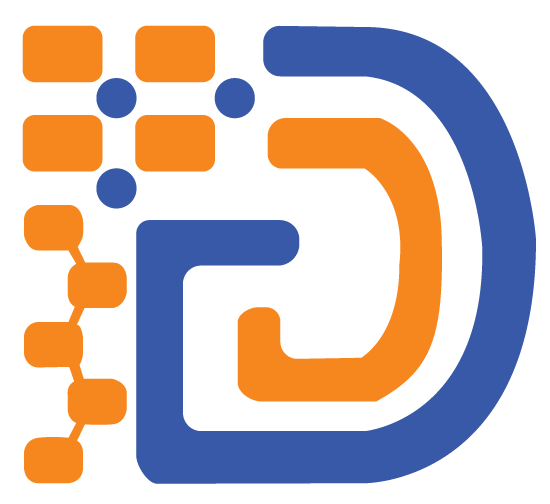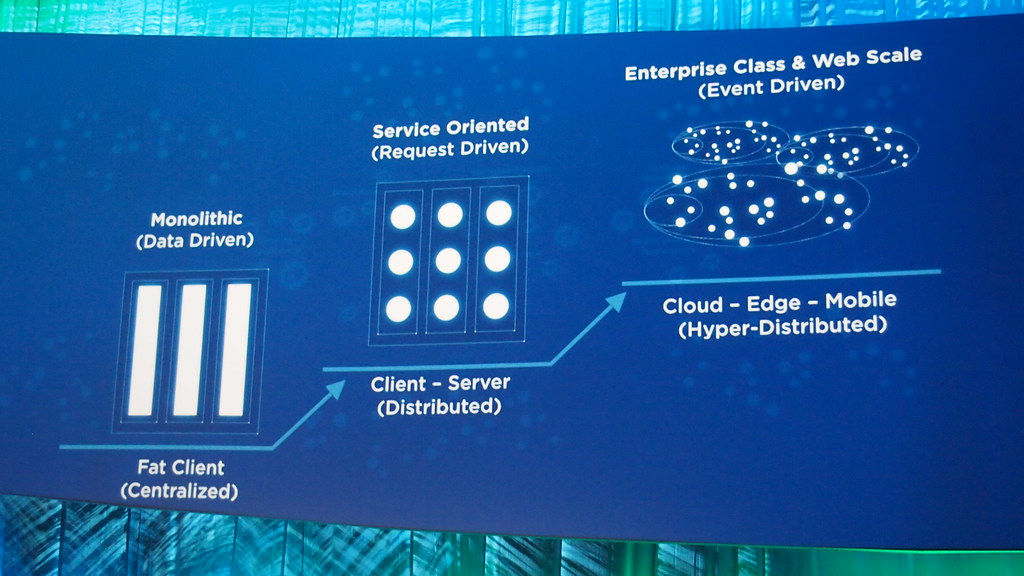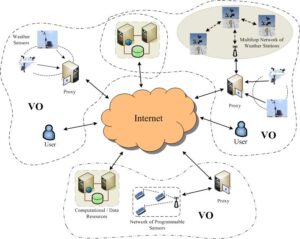Interested in distributed cloud! Wondering to know what is unique to distributed cloud and how it benefits enterprises?
Let’s discuss distributed cloud and its possible benefits.
Distributed cloud – A Tech Trend
One of the top tech trends is ‘Distributed Cloud’ widely used by many enterprises.
Distributed cloud is recognized as a public cloud computing service that runs in multiple physical locations which may involve third party data, on-premise data centre of user or public cloud infrastructures.
Moreover, distributed cloud resolves the management and operational inconsistencies that could happen in multi-cloud settings. Operations of distributed cloud are usually managed by the originating provider from single control pane in order to bring cohesion along with consistency to deployment.
The most significant is that this cloud gives the ultimate foundation for edge computing to run servers and applications close to where data is formed.
It is an architecture where various clouds are utilized for fulfilling compliance needs, support edge computing or performance needs while being managed from the public cloud source. However, the demand for distributed cloud is mainly driven by AI (artificial intelligence), IoT (Internet of Things), telecommunications and other applications that require to process excessive amounts of information in real time.
How distributed cloud works?
In distributed computing, application elements are spread across diverse networked computers and communicate with one another via messaging or APIs with the objective of enhancing overall performance of the application and raise efficiency of computing. The distributed cloud goes a colossal step by distributing compute stack of public cloud provider to customer who needs it. Additionally, it also expands the centralized cloud of provider with the help of geographically disseminated micro-cloud satellites.
Furthermore, the cloud provider used to retains essential control over the updates, security, reliability, governance and operations of entire distributed infrastructure. The provider provides access to customer on centralized cloud services and manages it from single control plane.
Key benefits of distributed cloud
There are numerous benefits of distributed cloud. Some noteworthy benefits are:
Improved regulatory compliance
With distributed cloud, data is located at the key source because of strict privacy needs; for instance, those linked with the data privacy law, PCI DSS card data standards, GDPR and many more. The cloud ensures that data meet the regulatory compliance needs as per data privacy legislations of specific country regarding access and transmission of PII (personally identifiable information). It is found that separate clouds in this architecture are not siloed as used throughout the firm while fulfilling all compliance needs.
Better scalability
In this cloud computing, you can integrate additional devices such as nodes at any location which assists in rapid scalability and availability of the overall cloud system. There is a chance to extend the capacity of existing infrastructure with this cloud which further aid in enhancing agility and elasticity. In addition, extra resources could be deployed flawlessly as workloads are handled by local servers. It assists in reducing downtime and rising effectiveness along with productivity.
Increased performance
With the usage of distributed cloud, the user can get the capability to influence compute power and resources from various locations to enhance performance. Fast processing of essential operations is also conducted which aid in improving efficiency. A close proximity to cloud services help in reducing latency. This cloud can give better cost performance.
Better visibility
IT team of distributed enterprises can have inclusive control of all linked cloud resources with the usage of single control plane of distributed cloud. There is an increase in visibility of all resources.
Lessen downtime and rise up-time
The distributed cloud can help in reducing downtime and increasing up-time. If a single system goes down, then it would not impact the entire cloud system. Cloud services could reside on local subnets which reduce the burden on the overall distributed network and as a consequence, minimize the possibility of network failure.
Challenges of using distributed cloud
Distributed enterprises are using distributed cloud but face significant challenges while deploying. Here are some:
- A challenge occurs for cloud providers and end users when securing a distributed cloud. It is because resources could be scattered throughout the globe.
- There is a challenge of data protection in this cloud. Backup plans for dispersed information resources might need a redesign of backup and recovery tactics for ensuring presence of data in the location.
- Presence of different connectivity models for every location create challenge in broadband connections by increasing the need for upgrading or meeting the growing demand for throughput.
Cases use distributed cloud
Being a new approach to computing, distributed cloud still not widely used in many places. Take a look at some cases of using this cloud!
IoT (Internet of Things)
Sensors and other technologies are found to be edge devices which makes the cloud ideal to harness the enormous quantities of data generated by such devices.
Content delivery
This cloud computing agenda is considered content delivery networks for streaming video and other crucial applications. It is because content is stored as well as delivered from locations to end users.
Edge computing
There is an increase in the capability to operate efficiently at the edge in distributed enterprises that process real-time information at great volumes. Additionally, this cloud aids in optimizing edge computing activities.
AI (Artificial Intelligence)
Real-time data drives the applications of machine learning and AI which involve manufacturing automation and medical device management and many more. Low latency of distributed cloud allows data to travel as fast as possible.
Know more About : Google Bard AI chatbot
The Future of Distributed cloud
With the evolving technology, distributed enterprises are increasingly migrating to the cloud to focus on data in edge devices. By the end of 2023, it is expected that around 500 million digital apps and services would be build using modern cloud approaches. Seeing the impact of cloud applications, it indicates that distributed cloud will become the new normal. Enterprises today prefer a multi-cloud environment which will raise the use of this cloud model to get increased visibility and operational control. So, the future of distributed cloud computing is very bright.





